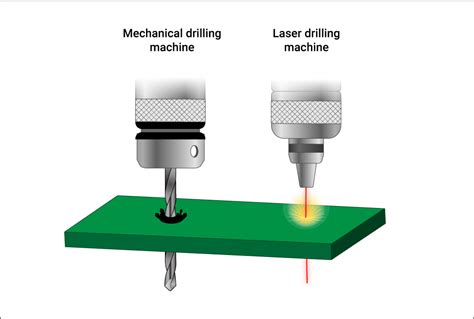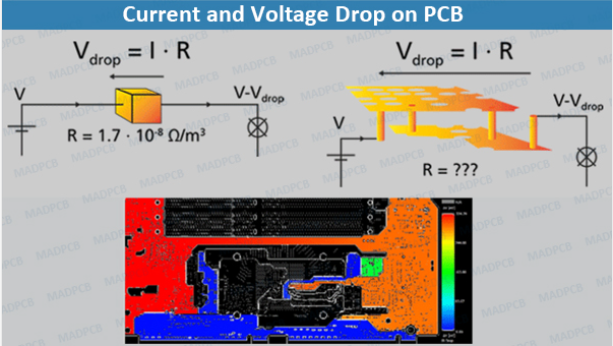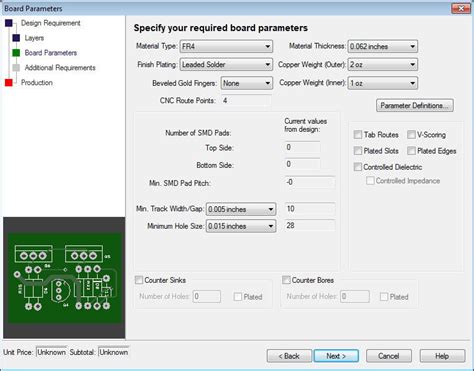Understanding PCB and PPG in Modern Electronics Applications
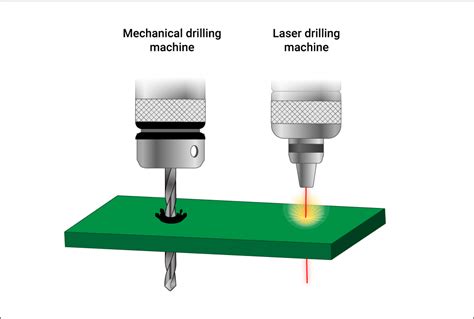
Key Takeaways
In the realm of modern electronics, the significance of PCB (Printed Circuit Board) and PPG (Processed Polymer Glass) cannot be overstated. Understanding these components is essential for those engaged in the pcb manufacturing industry. PCBs form the backbone of electronic connectivity, providing a platform for assembling various electronic components. Their design and construction directly influence the performance and reliability of devices, which is why selecting reputable pcb manufacturing companies can significantly impact your project’s success. The integration of PPG enhances the capabilities of PCBs, especially in terms of insulation and durability.
High-quality PPG contributes to a more efficient energy transfer, aiding in reducing operational costs associated with devices. It’s noteworthy that keeping an eye on the pcb manufacturing cost can guide your decisions in sourcing materials and choosing production methods that align with your budget while maintaining quality.
"Investing in advanced materials like PPG can lead to long-term savings in both functionality and reliability," as echoed by industry experts. By prioritizing both PCB and PPG, you are positioning your products for future advancements. In an increasingly competitive electronics market, understanding these dynamics can enhance your pcb manufacturing business and contribute to innovative solutions that meet consumer demands effectively.
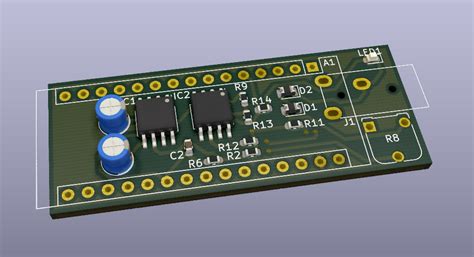
Understanding the Basics of PCB and PPG
When diving into the world of modern electronics, it’s essential to grasp the fundamental components that drive innovation and functionality. PCB (Printed Circuit Board) and PPG (Processed Polymer Glass) are pivotal in this landscape, each serving distinct but complementary roles.
Starting with PCB, its primary function is to provide structural support for electronic components while facilitating electrical connections. These boards are designed with intricate pathways that allow electricity to flow seamlessly between components, making them indispensable in devices ranging from smartphones to complex industrial machinery. It’s intriguing to note that a significant part of your understanding regarding pcb manufacturing hinges on the quality and precision required in crafting these boards. As you might explore, partnering with reputable pcb manufacturing companies can significantly streamline your projects while optimizing costs.
On the other hand, PPG contributes to the insulation and protective layers essential for maintaining the integrity of electronic circuits. The unique properties of PPG make it an exceptional material choice for improving device durability and efficiency. As you consider various insulation materials, you may find that leveraging advanced PPG formulations can lead to reduced pcb manufacturing costs by enhancing reliability and longevity.
Moreover, a successful pcb manufacturing business must understand how these two elements work in tandem. By integrating high-quality PPG within your PCBs, you can create more resilient products that stand up against environmental stresses while enhancing the overall performance of electronics.
To visualize their relationship better, consider the following table:
| Component | Function | Impact on Electronics |
|---|---|---|
| PCB | Structural support & connectivity | Fundamental for operational efficiency |
| PPG | Insulation & protection | Enhances durability & performance |
Recognizing how these materials intersect will empower you to make informed decisions in your electronic designs, ultimately leading you toward innovative solutions that meet today’s demands.
The Role of PCB in Electronic Connectivity
Printed Circuit Boards, commonly known as PCBs, are essential in the realm of modern electronics, serving as the backbone of virtually every electronic device you encounter. Their primary function is to provide a physical platform for electronic components while ensuring connectivity between them. In essence, pcb manufacturing involves the intricate design and assembly of these boards, which dictates how effectively they will connect various parts of a circuit. The realm of pcb manufacturing companies has grown significantly, offering numerous options for businesses looking to develop their electronic products efficiently. These companies rely on advanced technology and processes to keep the pcb manufacturing cost competitive while maintaining high-quality standards.
As you delve deeper into your understanding of PCB technologies, you’ll appreciate that effective connectivity hinges on several factors—such as the layout design, trace width, and materials used. These elements contribute not only to electrical performance but also to ensuring that your devices function with maximum efficiency. The global demand for innovative electronic solutions propels the pcb manufacturing business, driving advances in both materials and techniques used in production. By selecting reliable manufacturers and understanding the importance of quality in PCB design and construction, you can ensure that your projects leverage enhanced connectivity tailored to meet contemporary technological demands.

Exploring the Properties of Processed Polymer Glass
Processed Polymer Glass (PPG) is increasingly recognized for its valuable properties that significantly enhance the performance of electronic devices. As you delve into its characteristics, you’ll find that PPG boasts exceptional electrical insulation, which is crucial for preventing unwanted current leakage in complex electronic assemblies. This insulating property directly contributes to increased efficiency, helping electronics operate smoothly without excessive energy loss. Additionally, PPG exhibits remarkable mechanical strength, offering durability and resistance to environmental factors such as moisture and temperature fluctuations. When compared to traditional materials, PPG stands out for its lightweight nature and ease of processing, which can help reduce pcb manufacturing costs when integrated into designs. Companies that focus on pcb manufacturing are increasingly turning to PPG as a solution that not only reinforces their products but also aligns with the demand for innovative materials in modern technology. With the rise of environmentally conscious practices in manufacturing, utilizing PPG can also reflect positively on a company’s commitment to sustainability—an attractive trait for today’s market consumers. Therefore, your understanding of this hybrid material can enhance your approach when considering collaborations with reputable pcb manufacturing companies, ultimately supporting your efforts in a competitive pcb manufacturing business landscape.
Insulation and Efficiency: The Synergy of PCB and PPG
In the realm of modern electronics, the interplay between PCB (Printed Circuit Boards) and PPG (Processed Polymer Glass) is essential for achieving optimal performance. The insulation properties of PPG enhance the functionality of PCBs, which serve as crucial components for electronic connectivity. When you consider pcb manufacturing, it becomes evident that selecting materials that offer effective insulation is imperative to prevent signal interference and ensure reliable operation. Many pcb manufacturing companies have recognized the synergistic benefits of integrating PPG into their processes. This integration not only contributes to improved product performance but also impacts the cost-effectiveness of production, as enhanced efficiency can lead to reduced overall pcb manufacturing costs. Furthermore, understanding the relationship between these materials allows businesses in the electronics sector to refine their pcb manufacturing business strategies, producing higher-quality products that meet industry demands while maintaining competitive pricing. By leveraging the combined strengths of PCB and PPG, manufacturers can achieve greater insulation capabilities and enhanced efficiency in their electronic devices, ultimately driving innovation within their offerings.
Applications of PCB and PPG in Modern Electronics
In the rapidly evolving landscape of modern electronics, PCBs (Printed Circuit Boards) and PPG (Processed Polymer Glass) have emerged as critical components in various applications. PCB manufacturing plays a vital role in ensuring that electronic devices can function efficiently by providing a reliable framework for electronic components. With numerous pcb manufacturing companies producing innovative designs, the progression towards smaller, more powerful devices continues unabated. These manufacturers often grapple with the pcb manufacturing cost, striving to maintain high-quality standards while keeping expenses manageable. Moreover, when integrated with PPG, these boards benefit from enhanced strength and thermal stability, making them suitable for demanding environments.
The synergy between PCB and PPG amplifies the performance of electronic systems. For instance, in consumer electronics where durability and reliability are paramount, processed polymer glass offers superior insulation properties, ensuring that electrical pathways remain unobstructed by external elements. This partnership not only boosts efficiency but also supports the miniaturization trend favored in the electronics market. As such, your understanding of these applications can significantly influence your choices when considering options for your own pcb manufacturing business or collaborating with industry suppliers to harness the future potential of modern electronics.
Challenges in Manufacturing PCB and PPG
Manufacturing PCB (Printed Circuit Boards) and PPG (Processed Polymer Glass) poses a variety of challenges that can impact both efficiency and cost-effectiveness. One primary concern is the pcb manufacturing cost, which can fluctuate based on material availability, labor rates, and technological advancements. Many pcb manufacturing companies strive to optimize their processes to minimize these costs while still delivering high-quality products. You may also encounter issues related to the intricate designs that modern electronics demand; complex layouts increase the risk of errors during production. Moreover, ensuring consistency in material properties can be another hurdle, particularly when working with various polymers in PPG applications. The need for precise insulation properties and reliable connectors often leads to rigorous testing protocols, which add to the overall time and expense associated with operating a successful pcb manufacturing business. Such challenges necessitate innovative solutions and continuous improvement efforts in production techniques to ensure manufacturers remain competitive while meeting the growing demands of contemporary electronic devices.
Innovations in PCB and PPG Technologies
In the realm of modern electronics, the strides made in PCB (Printed Circuit Board) and PPG (Processed Polymer Glass) technologies have significantly altered how devices are designed and manufactured. With the growing complexity of electronic systems, pcb manufacturing processes have adapted to incorporate advanced materials and methods that enhance performance and reliability. Notably, pcb manufacturing companies are increasingly focusing on integrating innovative materials like PPG to improve insulation and connectivity within circuitry. By doing so, they not only reduce the overall weight of electronic devices but also help in minimizing pcb manufacturing costs, while maintaining high efficiency levels. The incorporation of such advancements underlines the synergy between these technologies, offering new possibilities in device miniaturization and performance optimization. Furthermore, as the demand for high-quality electronics continues to surge, there is a growing trend within the pcb manufacturing business to explore flexible designs that leverage both PCB and PPG, revolutionizing how we approach electronics in daily life.

Future Trends in PCB and PPG Development
As the electronics industry continues to evolve, there is a significant shift towards advanced techniques in pcb manufacturing that aligns with the latest technological innovations. Companies are increasingly investing in pcb manufacturing companies that not only focus on improving efficiency but also enhancing sustainability. Future developments are expected to emphasize the reduction of pcb manufacturing costs by incorporating smarter materials and processes, such as additive manufacturing. This trend is mirrored in the production of Processed Polymer Glass (PPG), where new formulations aim to reduce weight while maintaining robust electrical insulation and heat resistance. As you explore collaborations within the pcb manufacturing business, anticipate a surge in hybrid applications where PCB and PPG technologies converge, ultimately leading to lighter, more efficient electronic systems. This integrative approach is fueling research in nanocomposite materials that aim to push the boundaries of what is currently achievable, ensuring that both connectivity and insulation remain at the forefront of electronic device performance. By staying informed about these trends, you can position yourself favorably within a rapidly changing market landscape.
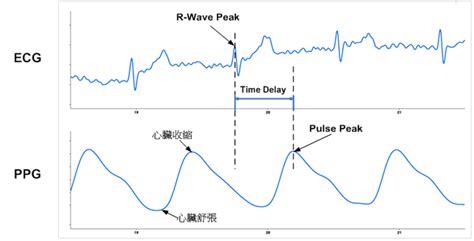
Conclusion
In summing up the intricate relationship between PCB (Printed Circuit Board) and PPG (Processed Polymer Glass), you gain a clearer perspective on their substantial impact across various electronic applications. Both elements play pivotal roles, particularly in the seamless integration of devices and ensuring optimal performance. It’s important to recognize how pcb manufacturing is fundamentally influenced by advancements in materials like PPG, which enhance insulation and efficiency. When you consider the current landscape, where multiple pcb manufacturing companies strive to innovate, understanding the nuances of these components can help you make informed decisions regarding procurement and design. As you navigate through aspects such as pcb manufacturing cost, evaluating your suppliers for their capabilities can be crucial to maintaining competitive edge. Moreover, as the electronics market increasingly focuses on enhancing sustainability, embracing newer technologies in both pcb manufacturing business and components like PPG will not only drive progress but also lead to more eco-friendly solutions. Exploring these dimensions allows you to adapt effectively to future trends.

FAQs
What is PCB manufacturing?
PCB manufacturing is the process of creating Printed Circuit Boards that serve as the backbone for electronic devices, enabling electrical connections between components.
How do I find reliable PCB manufacturing companies?
To find reliable PCB manufacturing companies, you should research online, read reviews, and compare services and prices. Networking within industry circles can also provide recommendations.
What factors influence PCB manufacturing cost?
Several factors influence pcb manufacturing cost, including material quality, complexity of design, size of the batch order, and the specific technologies employed during production.
Can I start a pcb manufacturing business?
Yes, starting a pcb manufacturing business can be viable if you conduct thorough market research, identify your niche, and ensure you have the necessary tools and expertise to meet industry standards.
What are the typical lead times in PCB manufacturing?
Typical lead times in PCB manufacturing can vary from weeks to months depending on complexity, volume of production, and current demand from pcb manufacturing companies.
For more information on this topic or to explore options for your project needs, please click here: https://www.andwinpcb.com/pcb-manufacturing/

